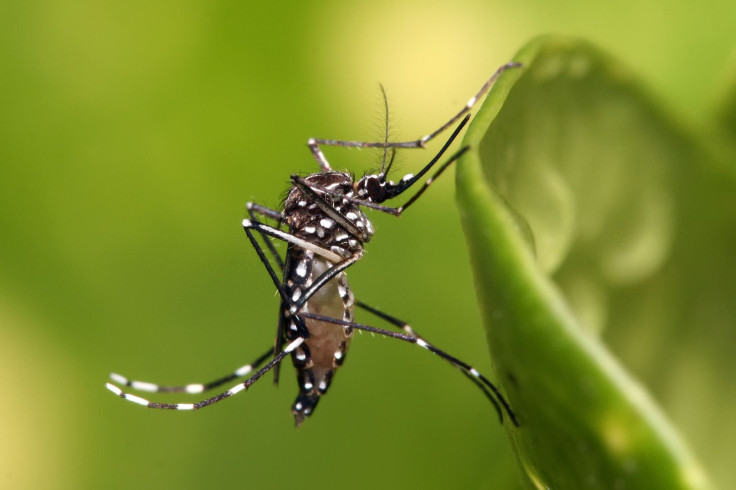Mosquito That Carries Yellow Fever, Dengue Spotted In California

Aedes aegypti, the species of mosquito that transmits deadly tropical diseases including yellow fever and the dengue virus, has made its way through California’s Central Valley to the Bay Area this year.
The aggressive mosquito, which is dark with white markings banding its legs, was first spotted in Madera and Clovis in June, followed by Fresno and the Bay Area city of San Mateo in August, according to the Sacramento Bee. Unlike other mosquitoes, the Aedes aegypti prefers biting people rather than animals and bites at all hours of the day, not just at night. Controlling the spread of these mosquitoes is difficult since they need as little as a teaspoon of water to lay their eggs, meaning they could easily breed in anyone’s yard.
Fortunately, none of the mosquitoes trapped by vector control groups have been shown to carry any diseases. The possibility for disease transmission still exists, albeit a small one, as cases of dengue and yellow fever are incredibly rare in the state. To infect a person with these diseases, the Aedes aegypti mosquito must bite an infected person first.
From 1970 to 2011, there have only been 9 cases of yellow fever in the U.S., all in unvaccinated travelers to West Africa or South America, where the disease is endemic, according to the Centers for Disease Control and Prevention (CDC). Since 2010, 200 people in California have been diagnosed with dengue fever, all of whom were infected while travelling outside the U.S, Dr. Vickie Kramer, a vector borne disease specialist, told the Sacramento Bee.
Still, public health officials believe the arrival of the Aedes aegypti mosquito is cause for worry. In 2009, cases of dengue fever, along with the mosquito that carries it, began appearing in Florida.
Yellow fever ranges in severity, from a mild self-limiting fever to a deadly hemorrhagic fever that results in liver disease and bleeding. In unvaccinated populations, the case-fatality rates might be greater than 50 percent, according to the World Health Organization. Americans are not routinely vaccinated for yellow fever unless they travel to endemic areas.
Dengue fever too is hemorrhagic, characterized by severe headache, pain, and bleeding, according to the CDC. Neither fever has a specific treatment, but people who suspect they are infected by either virus should go to the hospital for supportive treatment.
County health departments in the state are monitoring for cases of these diseases, urging local agencies to set up mosquito traps to facilitate the process. Officials are going door to door in some affected areas, advising residents to eliminate all standing water and spraying the insecticide promethean in and around homes.
The arrival of the Aedes aegypti comes at a troubling time, when local authorities are already working to prevent West Nile virus, which is spread by a different species of mosquitoes. In California alone, there have already been 275 cases of West Nile in humans to date in 2013.
Officials hypothesize that the mosquito may have entered the state as eggs on an imported container from another country, according to SF Gate. Researchers at University of California, Davis and Yale are analyzing the DNA of the mosquito to determine the mosquito’s country of origin.
"If it gets away it will change the way we live in California,” said Tim Phillips of the Fresno Mosquito and Vector Control District in an interview with SF Gate. "You may not be able to sit on your patio and enjoy a cup of coffee during the day without getting bit."



























